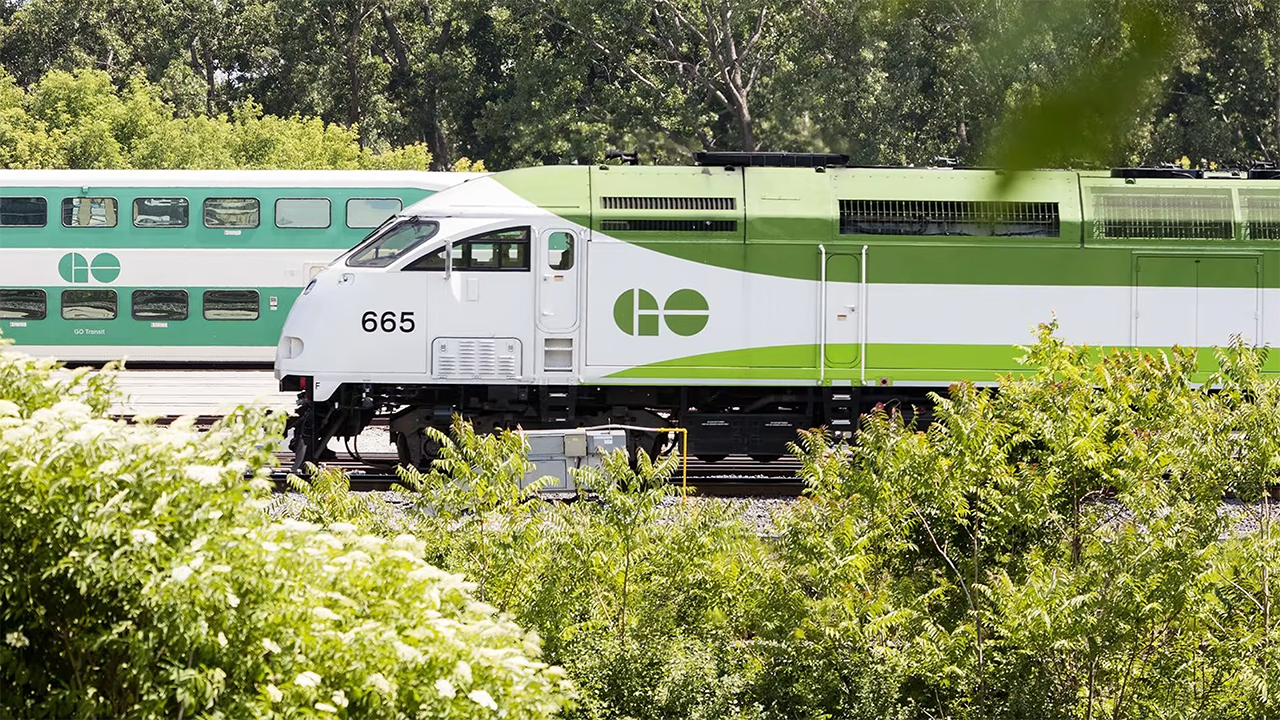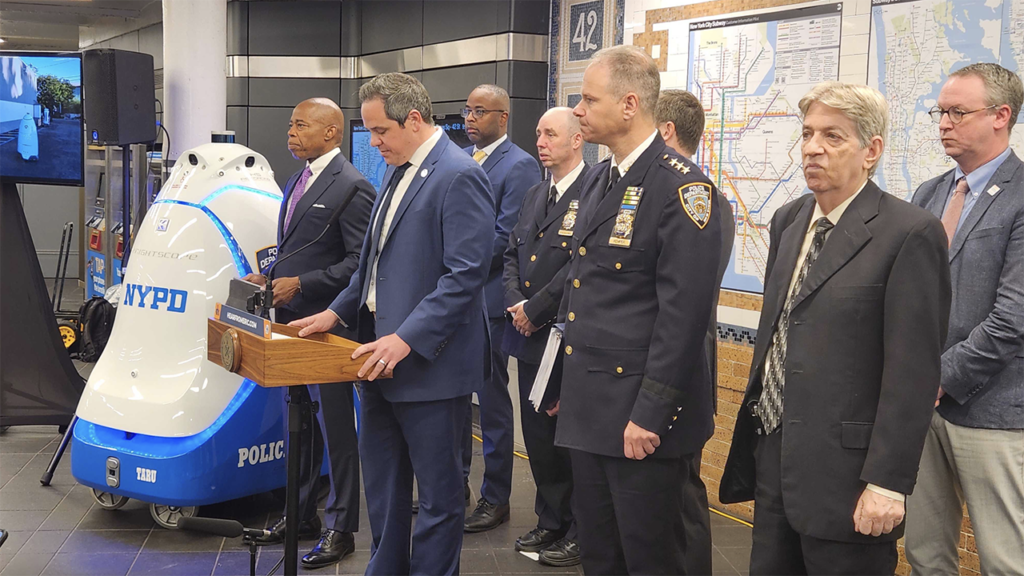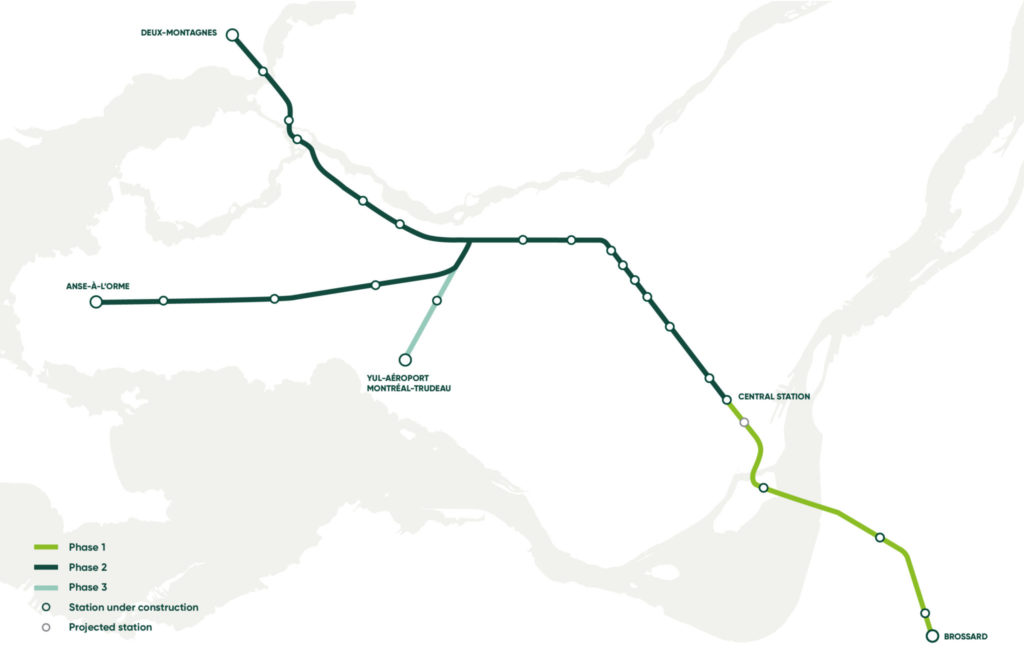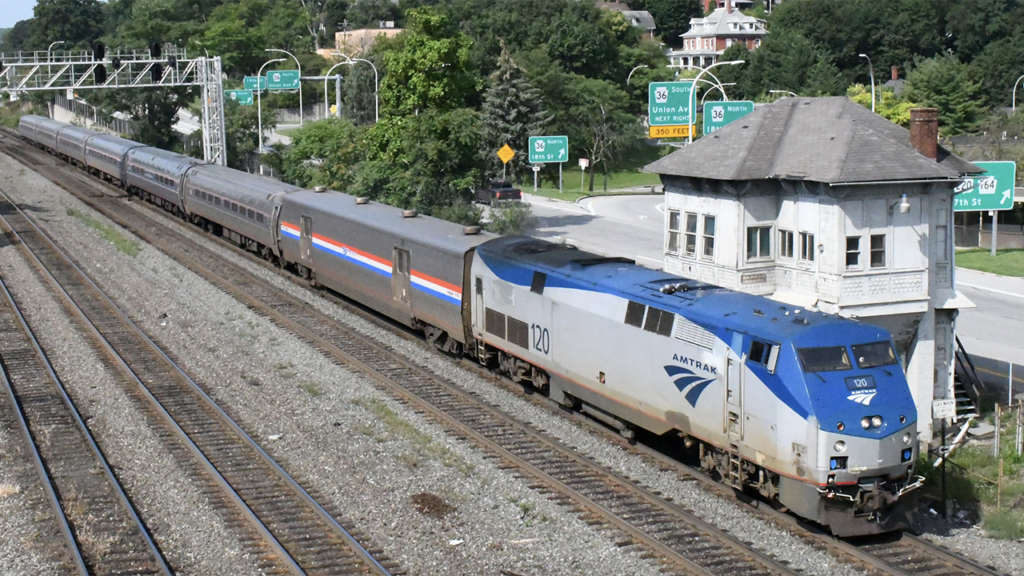
Transit Briefs: GO Transit, NYPD/NYMTA, PennDOT, REM
Written by Marybeth Luczak, Executive Editor
Kinga Surma, Ontario’s Minister of Infrastructure, has debuted legislation proposing that municipalities fund the design and construction of new GO Transit stations, according to The Canadian Press.
Ontario, Canada’s Minister of Infrastructure eyes a new way of funding GO Transit stations. Also, an autonomous security robot will report for duty in the New York City Subway; Pennsylvania Department of Transportation (PennDOT) and Norfolk Southern (NS) finalize an agreement to expand Amtrak Pennsylvanian passenger rail service; and noise mitigation measures are being implemented on Réseau express métropolitain in Montreal.
Kinga Surma, Ontario’s Minister of Infrastructure, has debuted legislation proposing that municipalities fund the design and construction of new GO Transit commuter rail stations, according to The Canadian Press. Costs could be recovered over time by levying a Station Contribution Fee on developments constructed around stations, the news service reported Sept. 25.
“The fee would be a voluntary tool for municipalities and they would apply to the province to use it,” The Canadian Press reported. “The government says they would need to show a reduction in development costs to help offset the fee for developers, such as reduced parking requirements or faster approvals.”
According to the news service, Surma’s legislation would also permit Toronto Transit Commission “to enter into cross-boundary service agreements with neighbouring transit agencies.”
In a related development, Metrolinx in May issued an Initial Business Case on the feasibility of adding a new GO station to the Barrie Line. The delivery of the station is being explored through the Ontario government’s Transit-Oriented Communities program.
The city of New York and the New York Police Department (NYPD), in coordination with the Metropolitan Transportation Authority (MTA), are launching a Knightscope K5 autonomous security robot in the Times Square subway station (see press conference video, above; picture below).
The first two weeks of the pilot program will be spent on training, configuration and setup protocols for the autonomous robot to navigate, Knightscope reported Sept. 25. This will be followed by patrol activities with a human officer between the hours of 12:00 a.m. and 6:00 a.m.

Knightscope said robot deployment offers public safety officials “an effective way” to augment their staffs.
According to a New York Times report, the K5 robot has four cameras that will record video but not audio. Additionally, the robot “will not employ facial recognition and—at a moment when the mayor is calling for vital city agencies to slash 5 percent of their budgets—the cost of leasing it averages out to about $9 per hour.” The newspaper said there will be charging docks for the robot, which will patrol “the station’s mezzanine level, but not the platforms, becoming a ‘mobile camera’ that straphangers could use to call for help.”
“The NYPD must be on the forefront of technology and be two steps ahead of those utilizing technology to hurt New Yorkers,” New York City Mayor Eric Adams said. “This is a good investment in taxpayer dollars. [K5 operates] … below minimum wage–no bathroom breaks, no meal breaks.”
“Today we take that notion of tried-and-true policing of assigning a transit cop to their post, and we bring that to a different level,” NYPD Transit Chief Michael Kemper said.
“This will very likely be the highest ridership week we’ve had since the pandemic over three years ago,” New York City Transit President Richard Davey said Sept. 25. “Why? Because we’ve been focused on faster service, cleaner service and safer service. This device … it will keep you safe.”
PennDOT and NS have entered into an agreement to expand Amtrak Pennsylvanian service in western Pennsylvania. Currently, the Pennsylvanian offers a once-daily roundtrip between New York City and Pittsburgh via Harrisburg. The agreement supports boosting service to twice daily.
To support the expansion, the commonwealth will invest more than $200 million in infrastructure and safety improvements that the Class I will build and maintain. PennDOT said it has applied for Federal Railroad Administration grant funds to help pay for the work.
The Pennsylvanian offers east-to-west service in the commonwealth, and in conjunction with the Amtrak Capitol Limited, connects with Cleveland, Ohio; Chicago, Ill.; and beyond. It runs on NS’s Pittsburgh Line, which PennDOT said is part of the “Premier Corridor,” a main artery for double-stack intermodal traffic moving between Chicago and metropolitan New York. It links with major terminals in Toledo, Ohio; Cleveland; Pittsburgh, Pa.; Harrisburg, Pa.; and the Lehigh Valley in Pennsylvania. NS’s trains are said to deliver or pick up freight at 140-plus locations along the corridor, serving more than 800 customers.
“The future improvements and construction will stem from a previously released Norfolk Southern operational feasibility study requested by PennDOT, and include upgraded rail lines, sidings and necessary communications signals infrastructure,” reported PennDOT, which noted that its renegotiated agreement with NS “ensures that safety and the best interests of the commonwealth are fully addressed.”
“Norfolk Southern is excited to build upon our partnership with the commonwealth of Pennsylvania by increasing passenger rail options for the citizens of Pennsylvania while improving the resilience of our infrastructure for the shippers in the commonwealth,” NS Senior Vice President and Chief Strategy Officer Mike McClellan said.
“We look forward to working with PennDOT and Norfolk Southern on this expansion of Amtrak service in the commonwealth,” Amtrak Vice President of State Supported Services Ray Lang said.
CDPQ Infra on Sept. 25 reported holding a presentation covering acoustics analysis and mitigation measures for the recently launched 10.4-mile, five-station REM segment.
“As we have said before, we are not happy about the noise caused by REM operations in certain areas,” said Jean-Marc Arbaud, President and CEO of CDPQ Infra, the developer of the automated rail network that upon completion will be 41.6 miles long with 26 stations, linking downtown Montreal to the South Shore, the North Shore, the West Island and Pierre Elliott Trudeau International Airport. “Over the past few months, we have adopted a strategic approach, with the support of international experts, to establish a diagnosis that will now enable us to implement proven solutions. These will be closely monitored to ensure that our noise reduction targets are met.”

According to the developer, beginning in the design phase, noise impact modeling and the subsequent planning for necessary mitigation measures were carried out, and at the project’s inception, a program was implemented to monitor noise levels during operations.
Following discussions with residents in certain areas, however, SYSTRA was commissioned to carry out a new noise measurement assessment.
Seven sound level meters were installed in residential areas in Île-des-Sœurs, Pointe-Saint-Charles and Griffintown to continuously measure the impact of REM. According to CDPQ Infra, the data collected shows that Griffintown and Île-des-Soeurs have higher levels than those indicated by initial modeling.
SYSTRA concluded that the main sources of noise are:
- “The transmission of vibrations from the track to the elevated structure, which creates a rumbling noise.
- “Contact between car wheels and the track, which generates a rolling noise.”
The company recommended performing acoustic rail grinding and installing dynamic absorbers on major sections of the route near residential areas. Following the implementation of these measures, CDPQ Infra said that a reduction in total noise intensity of 5 dB to 10 dB at the source is anticipated—equivalent to a three- to ten-fold decrease.
In early November, acoustic rail grinding will be preformed on the entire segment between Île-des-Sœurs and Central Station, continuing as far as Brossard station. Dynamic absorbers will be installed gradually from mid-October to December.




